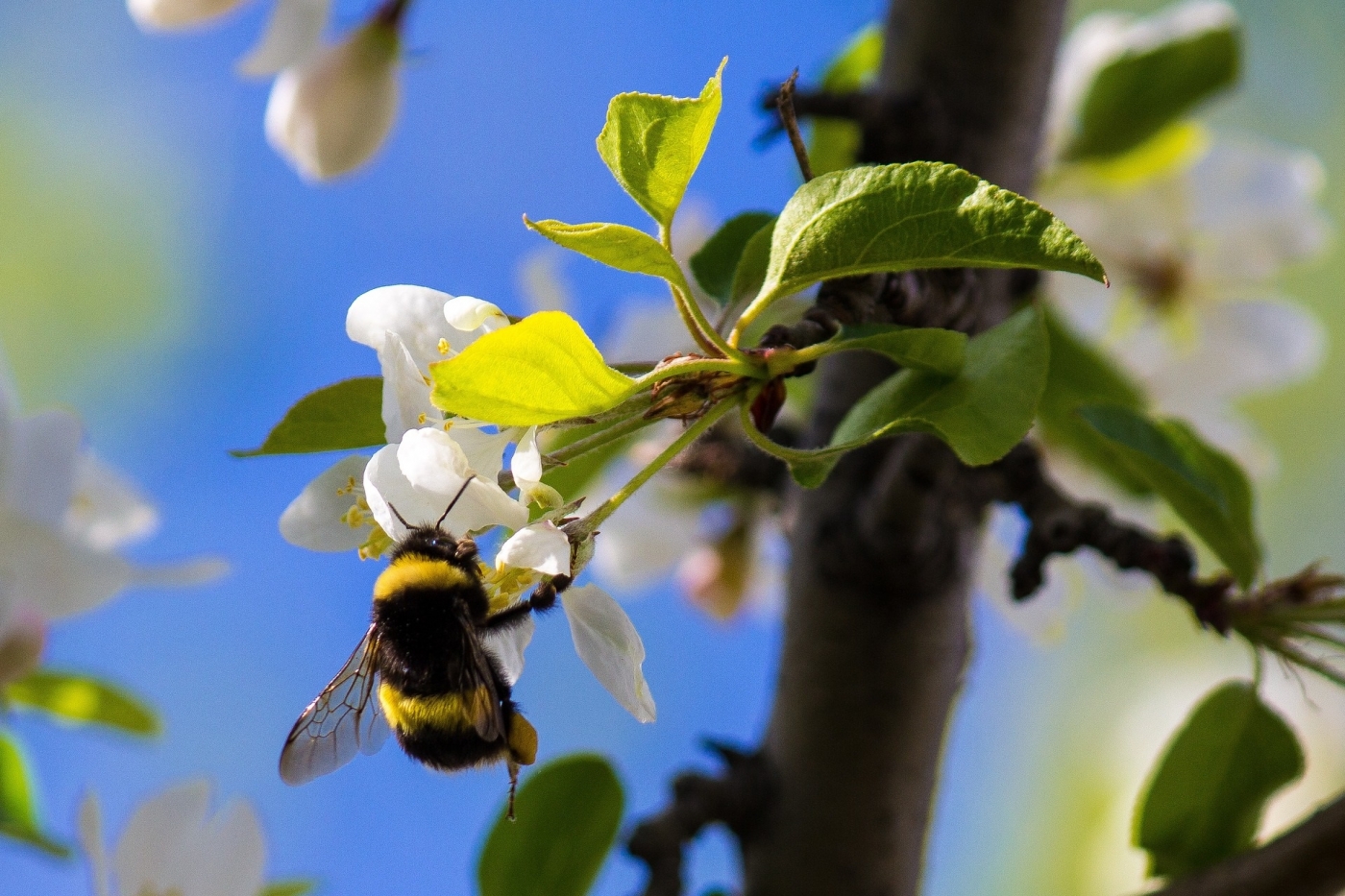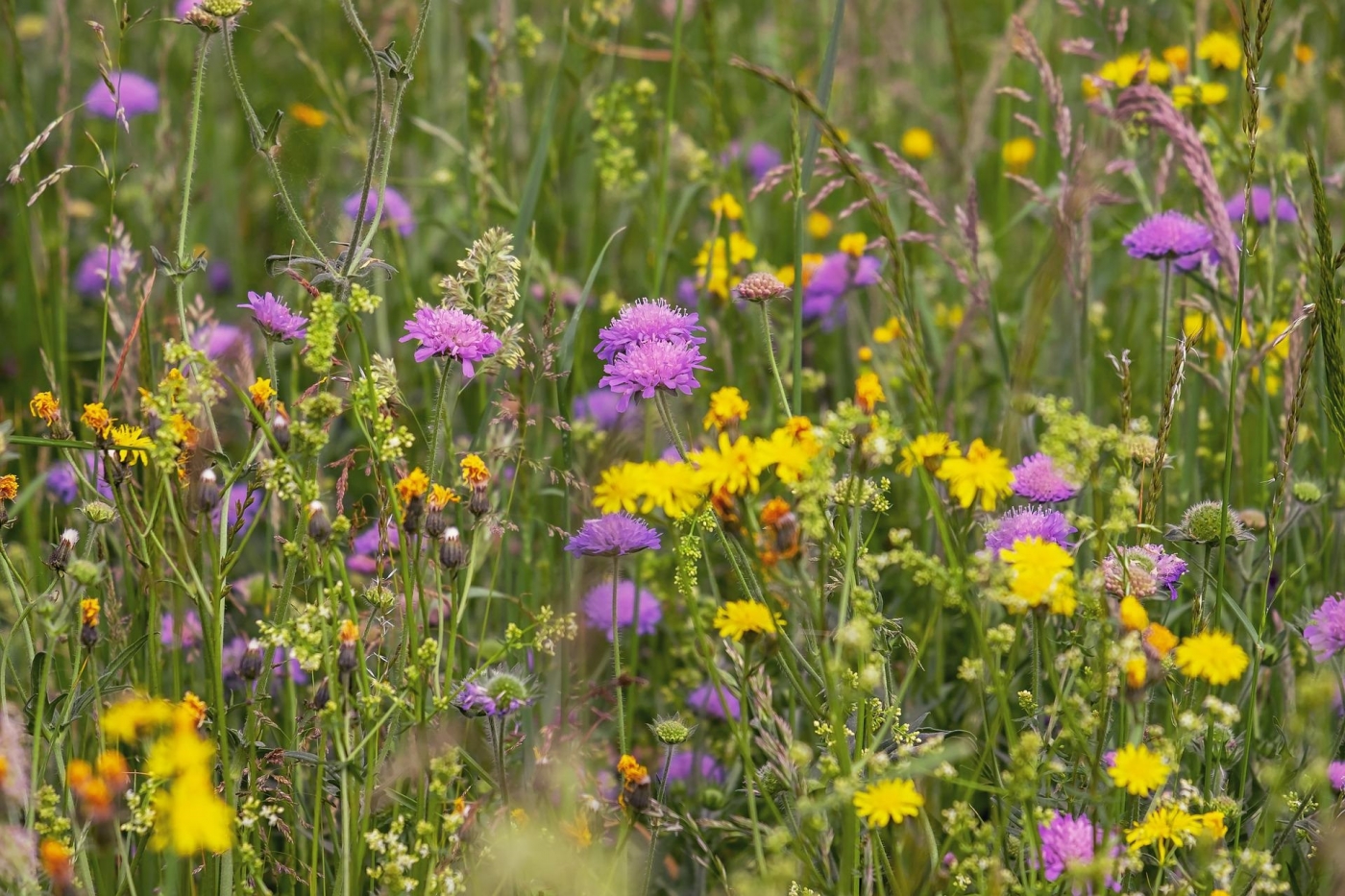Why bees love weeds
RSPB Sherwood Forest and Budby South Forest volunteer and bee expert Amy Smith explains why we need to respect the weeds in our gardens if we want to protect our bees.
Lazy summer days in the garden are not complete without a fluffy bumblebee flying, nosing through the weeds that spring up on your lawn.
You may have noticed that bees tend to prefer dandelions or other weeds to much more beautiful ornamental flowers.
You may have heard about leaving areas to go wild to help the bees. But why is that the case?

Some flowers are too beautiful
We hand bouquets around to those we love because the blooms are gorgeous. These flowers, however, are often too beautiful for bees. In the same way that dogs have been bred to develop different species, flowers have been bred to create the most perfect ones.
Flowers with lots of petals have been regarded as more beautiful than other flowers for centuries. Roses are an example of these so called ‘double blooms’.
In contrast, if you were to picture a daisy or a sunflower, you’d imagine an open flower with a dark centre and a row of petals around the outside. Bees can quite happily reach the pollen in the centre and go about their day.
But if you imagine a rose there are rows and rows of petals getting closer and closer to the centre that they completely conceal. These additional central petals often appear at the expense of what would usually be in their place – the flower’s reproductive system.
For those who grow flowers the lack of a reproductive system in their rose is not a problem. The flowers for next year can be grown from seed or grown through grafting.
Often this method is preferable to ensure specific varieties are grown each year. But the reproductive system of a flower is what bees are attracted to – the pollen. Often, ornamental roses are of little interest to bees due to their lack of pollen.

Wildflowers and their hidden chemicals
In recent years scientists have highlighted the importance of wildflowers for bees. One reason for this is the metabolites (substances needed for growth and energy) in the nectar and pollen. In the same way that humans need things like iron and calcium in their diet, bees need different metabolites too as no one can live on sugar alone!
Wildflowers have a fantastic variation of metabolites, but ornamental plants don’t. Nor do crop plants.
As humans have developed plant lines that grow bigger fruits or taste sweeter or are a nicer colour we have bred crops and flowers that have fewer metabolites in their nectar and pollen.
Until recently we didn’t even know about these metabolites or why they were important to bees and no one looked for them when developing new plant varieties.
Wildflowers still provide bees with the important metabolites they need. Recently researchers have found out that there is a chemical in heather that helps bees fight off parasitic infection and that specific pollens can help increase egg production.
There have also been interesting discoveries of caffeine in plants that bees seem to enjoy a little too much, and of plants that kill some bee species because they prefer to be pollinated by different bee species.
At the end of the day, bees like weeds. They don’t need fancy flowers. And if you want to encourage some bees to your garden try some parasite fighting heather (Calluna vulgaris)!
Join Amy on our Bumblebee Rambles
Amy will be be leading two Bumblebee Rambles on 30th April and 1st May.
Find out more and book your place on our events page.